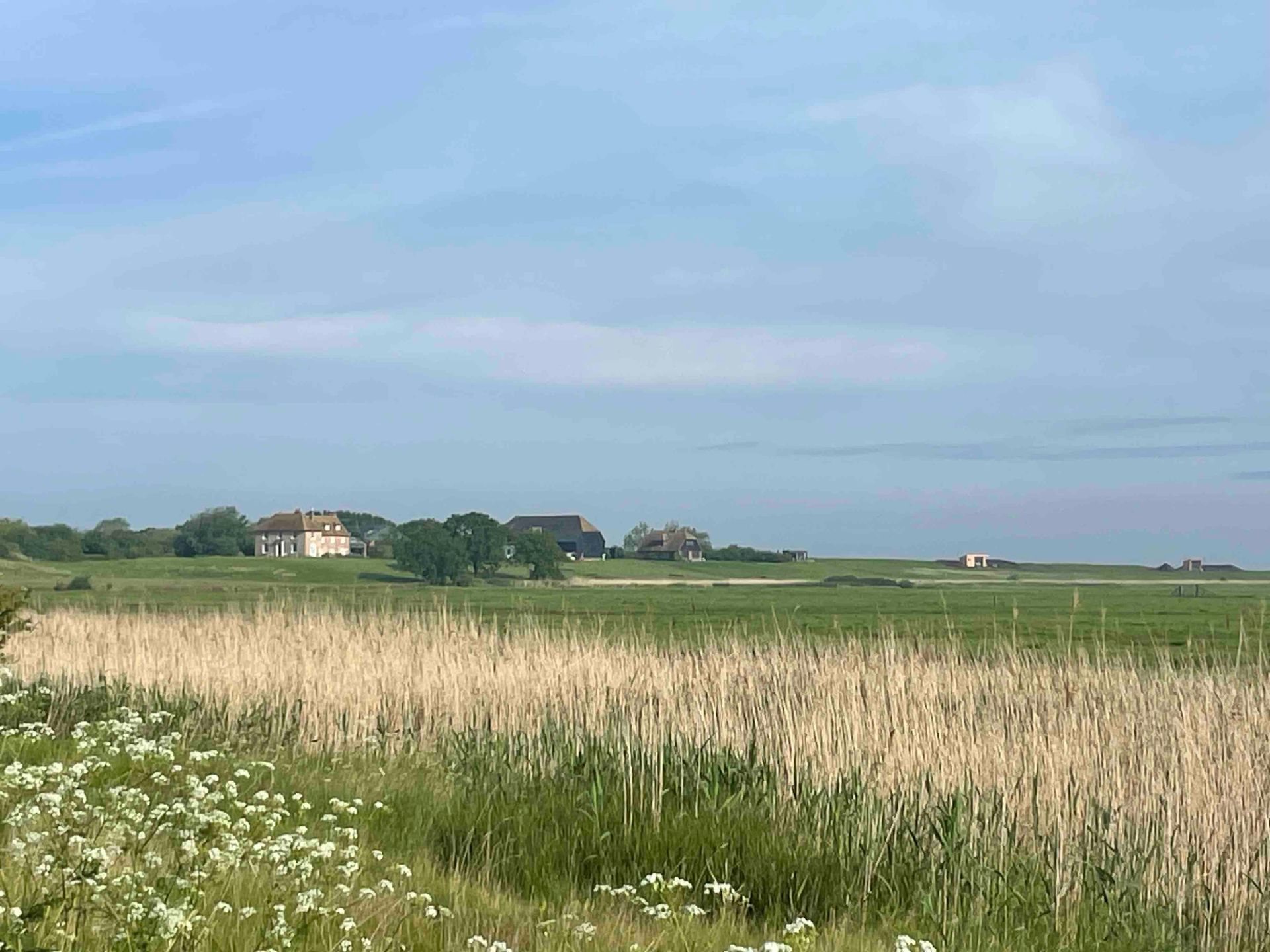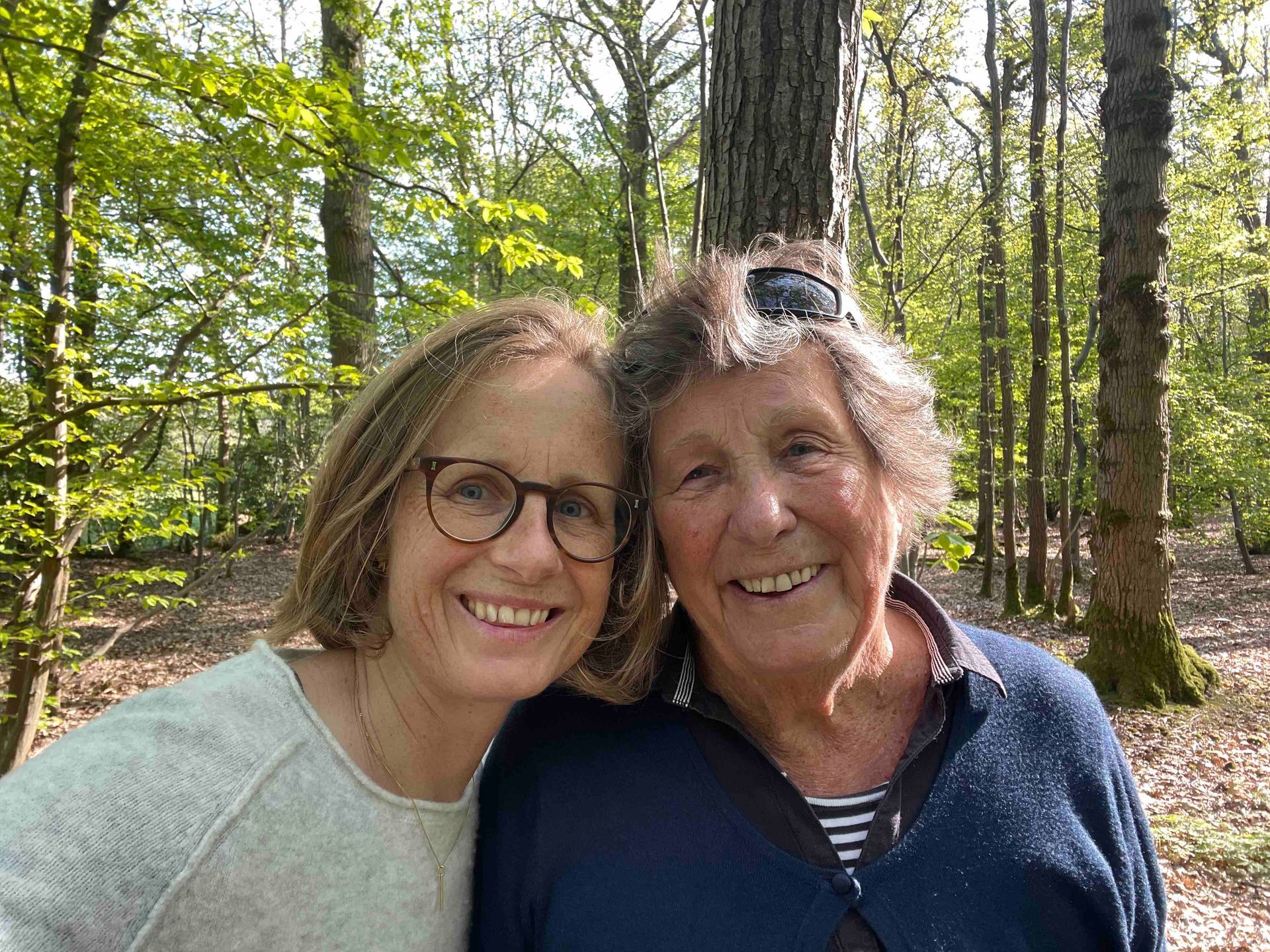It's time for active inclusion
25 October 2020
It’s a hugely challenging time for businesses. Active inclusion will help them thrive.
Businesses are facing multiple pressures: the impact of Covid 19, the economic downturn, the rise of sustainable investing and stakeholder capitalism and public calls to take a stronger stand against racial injustice and inequalities, to name just a few. Employers are having to re-think their entire operating models - fast. Lockdown’s enforced remote-working has led to a massive upheaval of traditional working practices that is being described as ‘the next industrial revolution’. Furloughing, pay cuts and redundancies are widespread. Business leaders are having to re-consider the purpose of their offices and prioritise wellbeing, collaboration and flexibility. In parallel, employers’ actions are being scrutinised more than ever before. Well-intentioned public statements aren’t enough: organisations are having to demonstrate that the way they operate is meeting the needs and interests of all their stakeholders, not just their shareholders.
This is directly impacting inclusion and diversity efforts.
In some organisations, D&I is receding as a strategic priority as attention is focused instead on technology capability, employee wellbeing and future estate and workforce planning. In May, 27% of D&I leaders reported that ‘all of most of their D&I initiatives were on hold’. Yet the need for inclusion is greater than ever. Pre-Covid and #BLM, many employers focused predominantly on women, working parents and LGBTQ+ employees. Today, they are having to take a much more nuanced approach and consider the needs and experiences of previously under-acknowledged groups of employees such as those living alone, those starting out in their careers, those with inadequate working space or broadband at home, and those silently coping with fertility challenges or domestic abuse. They are also having to urgently address the low representation of black and ethnic minority colleagues at senior levels and on boards.
Despite budgetary pressures, employers can no longer afford to take a passive approach to inclusion. The risks are numerous and highly damaging: losing diverse talent; erosion of company culture and identity; and plummeting employee morale over the longer-term as remote-working continues.
So what does active inclusion look like?
It’s about putting inclusion front and centre of your current business plans and activities. How? By gathering and mining your diversity data to identify impacts and trends and to constructively challenge decision-making. By tailoring policies and working practices to the individual and allowing local discretion in how these are applied. By constantly listening - in different ways - to your employees’ experiences and needs and responding swiftly to what you hear. And by taking targeted, sustained action to address bias. Businesses can no longer afford to delegate these responsibilities to an individual in HR or the CSR function. Active inclusion requires shared accountability and a systemic approach where inclusion is woven into all leadership and people programmes and day-to-day working practices.
Actively inclusive organisations are focusing on these 5 things right now:
- Time: how they are collectively managing working time and what they are investing time in
- Togetherness: how to create the social ‘glue’ by fostering collaboration and connectivity, and collaborating with clients, suppliers and competitors for mutual benefit and greater impact
- Testing: drawing on diversity of thought and multiple perspectives to re-design their organisations in an inclusive way
- Targeted action: setting specific goals around black representation, diverse hiring, closing pay gaps, and motivating employees over the long term.
- Transparency: mining diversity data, auditing the impact of organisational changes on different employee groups and publicly sharing progress.
This is a real opportunity for employers to invest in an actively inclusive approach.
Those that do will create more adaptive, efficient teams and more creative, resilient businesses that are better positioned for growth and - just as importantly - able to pivot faster in the uncertain times that lie ahead.
Enjoyed reading this? Share it with others
Recent blogs

How do you react when the going gets tough? We’ve been talking a lot about resilience at home. It’s a much-thrown-about concept I know, but I’m genuinely curious about how to really be resilient when the path you’re on feels anything but easy. Between anxiety-inducing news headlines, a tough job hunt for my stepson, my daughter finding school challenging, and clients navigating big transitions, 2025 has felt bumpy. The world of work is turbulent, with layoffs happening in multiple industries and budget cuts in others. GenAI adoption is shrinking early-career jobs, while over-55s are anxious about the future. Leaders and managers are grappling with the diverse needs of multigenerational, hybrid teams. I’ve been reflecting on how we ride out these bumps without feeling battered. Resilience isn’t something we magically have or lack - it grows as we show up consistently to adversity. Here are 3 resilience-building ideas. First, try reframing things. Reframing doesn’t fix a tough situation overnight, but it brings the energy to keep going. I love how my recent podcast guest, Soulaima Gourani, a globally recognized tech founder and World Economic Forum Young Global Leader, handles setbacks: ‘I don't look at my problems as problems, I look at them as projects. I’m just manipulating myself to think of life as a human experience. Even setbacks are an incredible opportunity to grow. I have a setback probably daily; I get used to it! When I call my girlfriends and we have a good laugh, I often share what went wrong that day. It just takes the spiciness out of it.’ You can hear more about being fearless in life and work in our conversation here . Second, focus on what we can influence. Stephen Covey’s framework in The 7 Habits of Highly Effective People describes a large ‘circle of concern’ within which sits a smaller ‘circle of influence’ (picture a donut). We waste energy worrying about things we can’t control; we build our resilience by putting our time and energy into those challenges which we do have some influence over. At work, that may mean: • Reflecting on what gives your work meaning. I discussed this with Professor Ying Zhou here . • Talking to your boss about reshaping your role, temporarily or long-term. My chat with Beth Stallwood about shaping better working lives may help. • Spotting new opportunities as stepping stones to a better work experience. • Building your skills to create more options for the future. At home, it’s about: • Accessing a coach or specialist advice if needed. • Focusing on eating, sleeping, and exercising consistently. • Finding pockets of time - however small - for things that recharge you. For me, that’s having a great book at hand to help me switch off, learning Korean for a few minutes a day, a coffee or a call with a friend, and the occasional spa treatment. Third, focus on the team. Resilience resides within teams . We can’t change everything alone, so talk about challenges and lean on your team (however you define ‘team’ at work and at home) for support. Workplace team resilience doesn’t demand a big ambitious programme, expensive external support or a flashy new employee benefit. Some powerful, low-cost habits make all the difference: • Having timely, quality conversations. • Setting up check-ins, building social bonds. • Making it easy for people to make reasonable requests. • Giving people chances to develop resilience through experience. Skilled managers are key - emotionally intelligent, with coaching and facilitation expertise. Find more ideas in my LinkedIn post or take a look at my outline for a new manager development programme here and please do get in touch if you want to chat about this, I’d welcome your input. And at home? Try: • Adjusting how you share the daily load. • Carving out lighthearted family time with no talk of challenges. • Sharing both your wins and stumbles of the week. • Asking, ‘how are you doing today on a scale of 1–10?’ (where 1 is ‘finding today very hard’ and 10 is ‘feeling at my brightest’). What helps you and your team at work or home? If things have been feeling bumpy for you too, I hope you can find your way onto a smoother path soon and please get in touch if I can listen or help.

How often do you get the luxury of extended, undisturbed time? Is there a quiet space or magical place you retreat to? I’m writing this in a silent house, up early before the rest of the family. All I can hear is the scratching of my ink pen on the paper and the cooing and chirruping of garden birds outside my window. No voices, machines, traffic, notifications or interruptions. I can hear myself think, there’s no-one calling for my attention and the jobs can wait. But at any minute, this brief lull will crumble. It's hard to get extended, undisturbed time. Many of us are spending less time in our home offices now more organisations have encouraged – or mandated – more in-office working. The majority of people still work a structured hybrid patterns, but likely 1-2 days per week at most at home. Not that home-working is typically quieter – diaries are still largely stuff with calls, messaging channels ping continously and the home distractions of pets demanding attention, chatty home-working partners, texts from teenagers at school or – my pet peeve – couriers knocking on the door, dropping the parcel outside and driving straight off while I’m halfway down the stairs thinking I’m needed. Our focus time is bounded by each interruption or intrusion into our attention. Some people I know say they need background noise to help them concentrate. At least 2 CEO’s I’ve spoken to prefer doing calls and emails in cafés and their office’s buzzy atrium where the constant hum of voices and hissing and thumping of coffee macines provide a cloack of anonymity around even sensitive conversations. Whatever your preference environment-wise, it turns out that noisy ones are actually damaging to our health; anything above the maximum recommended noise level of 53 decibels is described as a ‘ silent killer ’. A quiet library falls under this, your average office above it. Quiet time isn’t just about the decibel level, it’s also about freedom from distraction and interruptions. As I was telling over 200 sixth-form students at an Enterprise and Innovation conference a week ago, our brains prefer to focus on one task at a time and maintain an extended attention set – to get into ‘flow’, in other words. In terms of cognitive functioning, that’s when we are at peak performance. Every time our attention is tugged away from the task at hand, research has shown that it takes us over 2 seconds to reorient back to the task at hand. Known as the toggling tax, this happens on average up to 1,200 times per day, costing us 4 hours a week or 5 full weeks per year of lost attention, wasted time and reduced productivity. Ouch. So there’s a strong case for designing work environments that allow people to concentrate in quiet spaces and office design today is increasingly factoring this in. Co-working hubs and corporate offices now offer quiet zones where calls and conversations are not permitted; individual work spaces that look like padded, high-wall cubicles block out the rustling or key board tapping of workers either side; and individual sound-proofed call booths that keep noise leakage to a minimum. I’ve learnt the hard way to be more selfish with my quiet time when I’m writing, silencing notifications on my phone, putting noise cancelling headphones on and shutting the door to our companionable, aka needy, cat (and my companionable but not needy husband). I’ve been reminded this week of the power of quiet time and a restorative environment: I was fortunate to spend 2 nights at the UK’s only privately-owned national nature reserve in a luxury eco-cabin (hot shower and log burner included) overlooking 3,300 acres of marshland, big skies and an incredible array of wildlife. Having discovered it last year, I’d booked myself in again as a reward for getting to the ¾ milestone in writing People Glue and an incentive to crack on with the last 12,500 words as the manuscript deadline looms. In the magical peace and quiet, I wrote close to 3,000 words there – my average weekly output in just over a day – in long, undisturbed stretches punctuated only by my daily run, short walks to clear my head and the arrival of delicious dinners brought to my door. The biggest distraction was the wildlife outside the cabin’s huge glass windows: a mesmerisingly beautiful, shadowy-eyed short-eared owl did its utmost to persuade me to look up from my writing with its swooping, gliding and head-swivelling display. Hares bounded around playfully as buzzards, marsh- and hen-harriers patrolled hungrily overhead. A tiny wren skipped across my patio, tapping its beak on the glass doors, tail cocked up jauntily. No school runs, no pets to feed, no work calls, no washing macines to load, not unattended chores in sight nagging me reproachfully - I am very grateful to my wonderful husband for holding the fort at home so I could steal away. Perhaps you would prefer the cosmopolitan buzz of a city or a sunlounger beside a gleaming hotel pool - I wouldn’t say no to either at a different time. But soaking up this solitude, my time felt unbounded and that felt the biggest luxury of all. It has reminded me of the importance of consciously planned quiet time, ideally somewhere magical, for our wellbeing, our creativity and the quality of our thinking. I’m just wondering how soon I can book a return visit….

How to encourage this in a way that works for your business. There is a real and urgent need to address the creeping norm of employees working all hours, being contactable and available all the time. But Labour’s recent abandoning of a legal ‘right to disconnect’ in favour of a voluntary code of practice is probably the right move, in my humble opinion. Here are 5 reasons why, 5 ways to make switching off a win/win for you and your organisation, and 5 positive actions to put into practice now. Why legislation is too blunt a tool: Heavy-handed legislation will probably antagonise businesses, not secure their support. There's more to do first to spotlight organisations that are managing the boundaries well between working & non-working time well and proving the business benefits. It’s too early to say confidently how well similar legislation has worked abroad. Australia only adopted this last month; the longer-standing fine-based approach in France and Portugal isn't proven as an effective deterrent. Human-centred organisations are probably already paying attention to this, being creative about work boundaries and using their approach to enhance their employer brand. They'll be the ones who proactively adopt the code of practice and make it genuinely part of ‘the way we work here’ - and they'll win at attracting and retaining talented people longer-term as a result. ‘But clients will go elsewhere’. This is the defence I often hear in rejection of proposals like the right to disconnect. No, client won't IF you engage them in the change and show them that it means they get to access your sharpest minds working at their best,. When organisations see their early-adopter competitors living the code and still winning & keeping desirable clients - and nabbing theirs - they’ll swiftly follow suit. Let’s be clear: some people will continue to say yes to high pay/exciting work in return for ‘you’ll work whenever when we need you ‘. But it’ll be a transactional relationship lasting for as long as it benefits the individual (or employer) and no longer. Easy come, easy go. If that’s your philosophy as an employer: own it and be transparent. Don’t sign the code and pay it lip service. If yours IS an organisation that wants to do better at encouraging employees to switch off, try: 1. Using Labour’s shift to open up conversations at work about pressures to communicate or be available after hours. 2. Adding ‘we support the right to disconnect’ in your recruitment material and having examples to share with candidates during interviews. 3. Supporting selected managers and their teams to trial different experiments around switching off. 4. Asking people ‘how can we help you do to your best work within your normal working hours?’. ‘What gets in the way of this?’. 5. Setting up an industry-wide collaboration to trial different ways of achieving the same outcome. Asynchronous and flexible working are here to stay and bring many benefits to individuals and their employers. But they can make it a challenge to co-ordinate and communicate within teams and across time zones. Here's what you can do personally to uphold the right to switch off and respect other people's non-working time: Add an email footer like: 'I'm sending this now because it suits me but I'm not expecting a response outside of normal working hours'. Work offline if you're working late evenings or weekends, so you're not visible on Teams/whatever channels you use, and schedule your emails to send the next day to avoid the ripple effect of people responding immediately. If people on your team have repeatedly worked late or sacrificed home lives to help reach a deadline, then give them some time back straight afterwards. It's simple and effective. If you're a manager, find out people's preferences around being contacted - or not - during out of hours or when on leave. Everyone's different, so make it your job to know. See annual leave as an opportunity for a colleague to step up and have some stretch experience by covering for you, with support beforehand. Then switch off properly and don't muddy the water by dipping in and out unasked. Listen to my podcast conversation with Ben Higgins, Global CHRO of Wholesale Banking at Societe Generale, about how he does this. These examples are about applying #timeintelligence. If you want to know more about my #timeintelligence sessions for leaders, teams and individuals, get in touch . And if you're making good progress in your organisation on switching off - or at least trialling a few changes - then I'd love to hear more. During normal working hours, of course.






